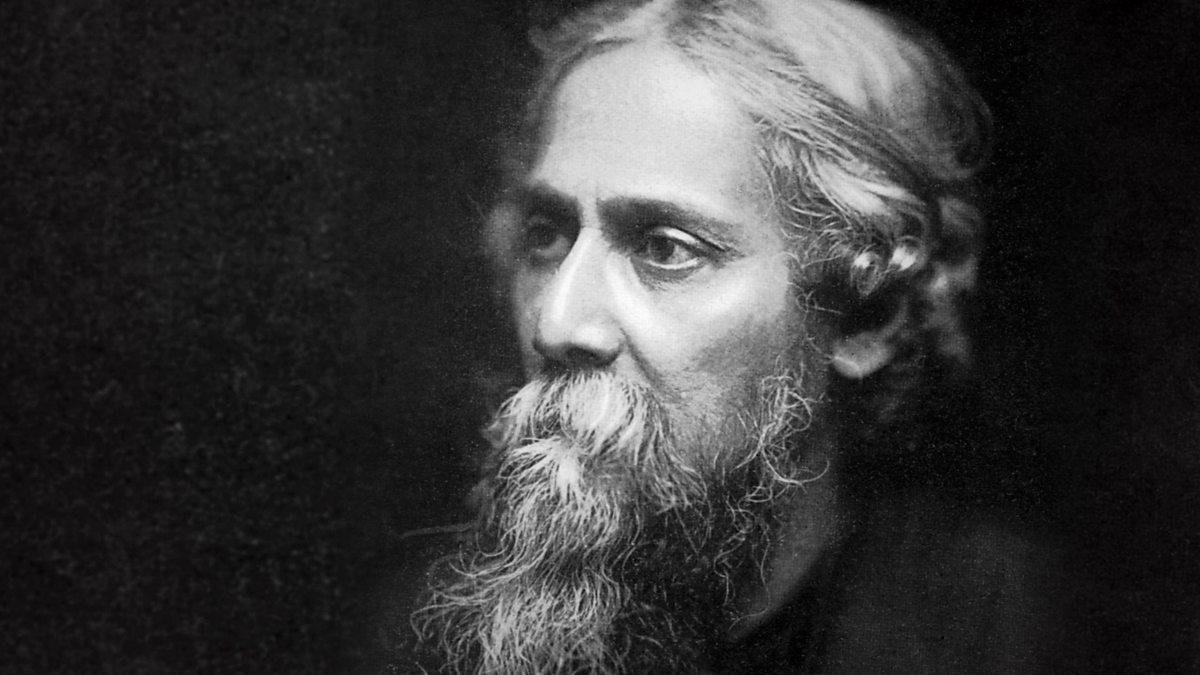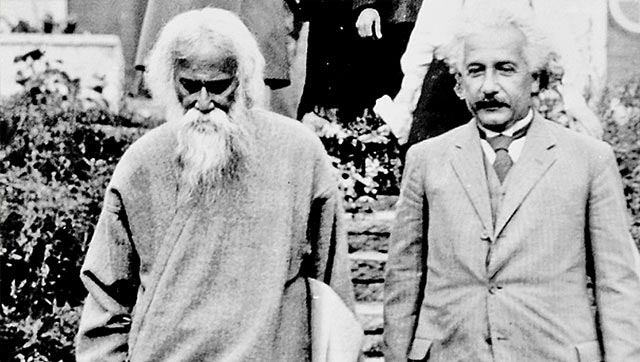He is one of the greatest ever poets this planet has ever produced, if you are an Indian your life & education crosses this personality in innumerable ways – more so if you are a Bengali. With an extremely rich body of work consisting of more than two thousand poems and about one and half thousand songs in addition to several short stories, plays, and novel, Tagore stands tall and relevant even today, the increasing number of adaption of his work even today in a different corner of the art world just re-enforces this fact.
The worldwide reputation of the poet came into being, after the publication of Gitanjali – a selection of these poems, for which the poet was awarded a Noble prize in literature in 1913. Gitanjali further established the writer as a profound thinker of spirituality and mysticism even though he pointed out several times at different places that he was not an ascetic. There are mentions and influences of this idea of spirituality or God at many places across his works, but it can be understood most simply and straightforwardly from a conversation, he had with Albert Einstein, the greatest scientist world has ever produced.
On a rainy July afternoon in 1930, Tagore was hosted by the scientist in his house in Caputh, Berlin. The conversation between the two was recorded and later on published in Modern Review. The conversation reveals both the point of view, the logicians’ and philosophers’ – however in the most unique way possible.
The discourse dives into the nature of truth and beauty. The scientist agrees to a part of what was believed by the poet - which truth and beauty both depend on human consciousness. In other words, in the absence of human minds to behold and validate, beauty would not exist, and a step further in the absence of human consciousness to be aware of, the truth will also not remain as truth.
The first part of it about beauty, as it is straighter forward in nature was agreed by the scientist, as beauty by definition is dependent on the validation from human beings, singularly or collectively. A morning star is beautiful (taking the example Einstein only used), because there are human beings to validate it’s beauty and appreciate it. In absence of a human mind, it never could have been labeled as beautiful.
However, the second part was not as straight forward. All that exists in nature, will cease to exist in the absence of a human mind to be conscious of it. Einstein says about the table in the room, which would continue to exist, even if no one is there to see and validate its existence. Or for that matter, the Pythagorean Theorem would be true, in a world where it has not been learned and formulated by a scientific mind.
Here the poet enlightens the scientist about the concept of Meta-consciousness - a collective consciousness, and reality has to borrow existence from that to exist. Simply, about the table, it can very well be beyond the awareness of one or maybe few but not beyond that Meta-consciousness. This Meta-consciousness the supreme reality, the absolute, the ultimate - realization of which has been achieved by a few enlightenment seers only since the dawn of humankind. This concept is the philosophical core of more than one school of Vedantic thought, conceived at least two and half millennia ago in this country. The ancient seers called this Meta consciousness as Brahman.
It might seem a bit counterintuitive to perceive, but what the poet was hinting at was the concept of the non-dual nature of Consciousness and Existence or Truth. Whatever exists be in an Electron or a Galaxy exists in the space outside (The Mahakaash) has to exist also in the inner space of the human mind (the Chidakaash) to become a reality. And there is no difference between the existence in the great outer space (Mahakash) and our mind space (Chidakaash) – if non-existence existed, it would not have been non-existence any more.
The scientific mind will argue so you are saying “Electron did not exist when you were not aware of it ?”, the philosophers’ answer would be “No”, electron did not exist before J.J. Thompson’s cathode ray experiment in 1896. What existed before was the idea of charge-neutral building different kinds of building blocks, constituting different matters, sometimes termed particles, sometimes atomos. The meaning of atomos, itself is un-cuttable – so breaking it further down to electron, proton, etc was beyond imagination.
Who knows, scientists may in the future reject the idea of the electron in favor of some stronger suitor. That day electron will not cease to exist, but the stronger suitor will come into existence – simply because it will be able to make space for itself in the Chidakash or human mind space.
The above is a crude and oversimplified example, a concrete but a bit complicated one would be one’s own experience itself, the experience of the world one lives in, that one sees, smells, hears every second. If you happen to hallucinate a world, would that experience seem any different from the one you currently are having? When you dream at night, did you ever know it was a dream until it wakes you up – was the experience different from what you experience round the clock. Your hallucinations, dreams are all created by your mind itself, so can be the world you think to be real – it’s a disturbing thought that can’t be disputed logically. The consciousness you have is self-sufficient to create, sustain and destroy the world around you, and there is no guarantee that the world that you live in, has an existence as well outside your mind space.
A school of Vedantic philosophy – Qualified Monism states, the world is a collection of whatever exists in the collective consciousness of all sentient beings in the world. The poet in the conversation was trying to put this view forward, without human existence and mind space to borrow existence from – there is no independent existence of the word and anything that we believe exists. This collective consciousness is nothing but God, all of our individual consciousness are subsets of that mega collective infinite consciousness, qualitatively the same.
In 1935, Tagore wrote his iconic poem “Aami” which captures the essence of this discussion as well as his idea of nature or truth, He said,
With my senses’ hues
Emerald as green I muse
And the coral as red;
As my sight I spread
The sky is luminous
East to West with light glorious;
To rose I said, “Bonny is thee”
And so did she be!
Esoteric it is, you’d say;
Words of a poet, nay.
I’d say, “’tis truth and poetry so;
For the mankind, my ego;
On which canvas
The Creator’s artistry does pass.
The hermit breaths “no, no, no;
Mere myths are these that go;
No emerald, no coral, no light, no rose,
Neither ‘you’ nor ‘me’ should you suppose.”
Translation by Rajat Das Gupta
It’s hard to guess if there was any impact post this event to have impacted Einstein’s view on the nature of truth, as he for almost his whole life advocated for an observer-independent reality. Without budging from his point of view for 28 years (1927 – 1955) during the famous “Einstein – Bohr” debate, he represented the view which was like what he proposed during his discussion with the poet.
Irrespective of what came afterward, the conversation itself makes us stand between the two distinctly separate worlds, and get a good glimpse of both. When the beholder shifts his glance from one side to another the world seems to be changing, is it in itself not enough to describe in which direction the nature of truth lies?
~Avirup Chakraborty




0 Comments